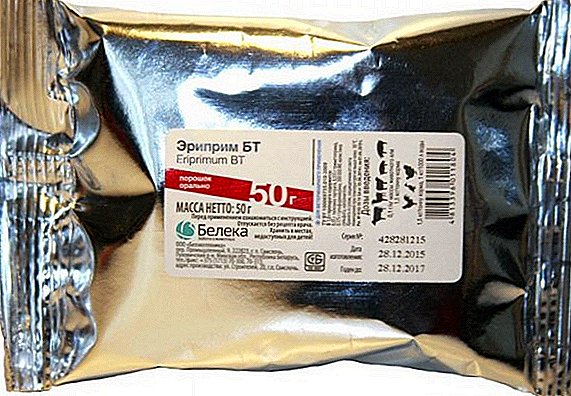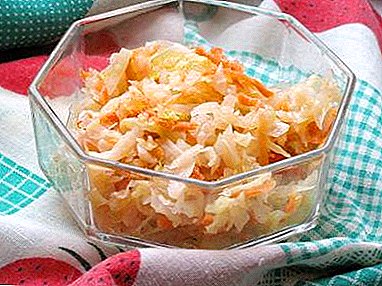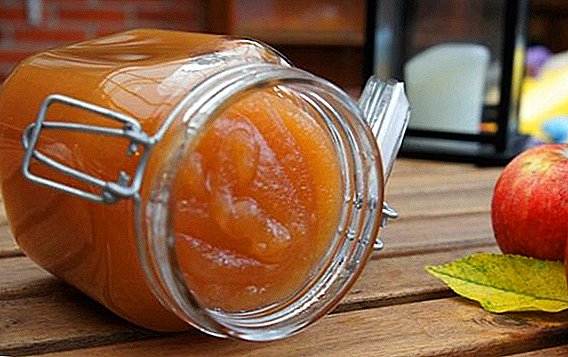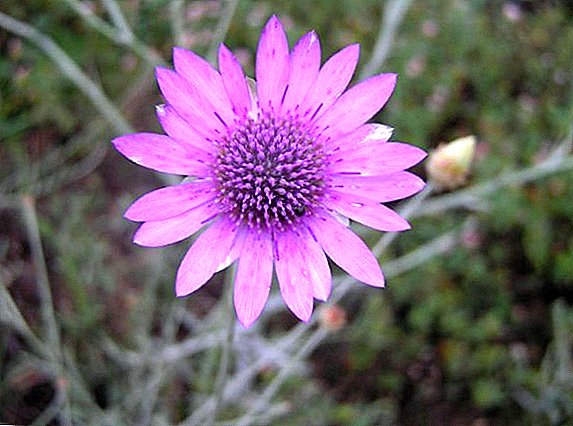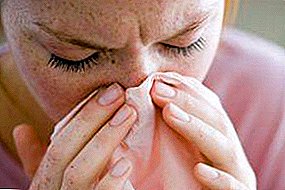
Unfortunately, even reverent and attentive care does not guarantee that the plant will not get sick. Numerous varieties of orchids are prone to rot, and this process is quite rapid.
With the progression of the disease, it is necessary to urgently take measures for treatment, otherwise you can lose the flower. Therefore, growers should know the causes, consequences of rotting and possible ways out of the situation. In our article we will consider all possible causes of phalaenopsis rot and measures to combat them. You can also watch a useful video on this topic.
What is rotting?
A common definition of disease caused by pathogenic fungi and microorganisms is called decay.. This process leads to the defeat of the root system, the drying of leaves, cores. With prolonged inactivity, the plant fades completely, rot covers all organs and soon leads to the death of the flower.
What parts of a plant can undergo a process?
The main cause of rot is all sorts of fungal diseases. In which, first of all, young leaves, flowers, and buds are affected. It is noteworthy that the rot affects the core, and then goes down to the roots.
Accelerates the process of abundant watering and low air temperature in the room.
How to determine the disease?
It is possible to find out whether phalaenopsis has rotted out or not, based on the presence of the following symptoms:
 the flower does not grow;
the flower does not grow;- foliage loses elasticity;
- the color of the leaves fades to yellowing;
- spots are visible on the leaf plate, possibly with a pinkish tinge;
- greenish traces of sporulation appear on the walls of the pot;
- see deformed areas on roots and leaves;
- a brown spot appears on the flowers;
- affected areas are rapidly increasing in diameter;
- discoloration of the root system, it becomes noticeably darker;
- shedding flowers, buds;
- loose, unstable top of the plant;
- when you click on the root - a liquid appears;
- the presence of weeping areas on the rhizome.
The apparent blackness of any of the roots is considered a sign of rotting.. But even a seemingly healthy, normal-colored root can have a black core in the cut. It is important to pay attention to the presence of mucus and the separation of velamine.
Effects
First of all, phalaenopsis damaged by rot throws off foliage. More precisely, she falls away, becoming soft and flabby. The leaves fall off one by one. Also, do not hold buds on the peduncle. Roots can not perform their functions.
Thus, nutrition, fluid intake is stopped, metabolism and photosynthesis are disturbed.
In the initial stages, the orchid is treated, the main thing is to recognize the disease in time.. Even in the absence of a root system, the flower can still be reanimated. And if the process is started, when the rot has spread all over the plant, nothing will help.
What remedies can help to save a flower?
 To help phalaenopsis and choose the right remedy it is important to determine the cause of rot, and only after using this or that remedy. The most effective drugs for the prevention and treatment of fungicides are considered, which destroy the causative agents of fungal diseases in the flora.
To help phalaenopsis and choose the right remedy it is important to determine the cause of rot, and only after using this or that remedy. The most effective drugs for the prevention and treatment of fungicides are considered, which destroy the causative agents of fungal diseases in the flora.
There are they of a different spectrum of action. The main active substances of fungicides are:
- aldehydes;
- mercury;
- copper;
- manganese;
- organic matter.
For the treatment of rotting processes are used:
- Fitosporin-M Recommended for the prevention and destruction of fungal, bacterial diseases.
- Mikosan useful for the treatment of the disease in the initial stages of development, stimulates the immune system, activates the work of lectins.
- Copper sulfate made on the basis of copper sulfate, a positive effect after application is observed after three hours.
- Bordeaux mixture, the active substance is the same as copper sulfate. An additional component - lime, to reduce the acidity of the soil.
- Quadrix - a broad-spectrum fungicide, made on the basis of the substance azoxystrobin, used for prophylactic and treatment purposes.
Step-by-step treatment instructions for different types of rot
Buying an orchid, the owner immediately tries to find the maximum amount of care information. And the first thing that catches your eye: the natural habitat - tropical forests, where it is hot and humid. Therefore, in the future, they begin to water abundantly, confusing the concepts of humidity and excessive watering. Thereby creating an ideal environment for the development of pathogenic microorganisms, rot.
Important: Almost all members of the Orchid family are quite susceptible to various diseases. Especially dangerous for them is rot. The most common root rot, gray rot, neck rot.
Gray

Symptoms: formation of dark areas with a fleecy shade of gray on foliage, soil. Inflorescences, in turn, are covered with brown spots.
Cause: rot usually occurs in conditions of high humidity and low temperature. Also, excessively frequent application of nitrogenous fertilizers can cause similar symptoms. Subsequently, the orchid loses immunity to the disease.
Treatment:
- Transfer the diseased plant to another room with an optimal microclimate.
- Remove damaged flower areas.
- Treat phalaenopsis with an aqueous solution of fungicide.
Prevention: with watering use of drugs that increase disease resistance. Do not forget about the right care.
Cattleya, phalaenopsis, cymbidiums often suffer from gray mold.
We recommend to watch a video about gray rot orchids and flower treatment for the disease:
Necks

Symptoms: leaves fall away from the neck of the stem, change color, acquiring a yellow tint. Externally, the disease no longer manifests itself, because the process of decay takes place in the neck itself.
Cause: abundant moistening, prolonged nailing of the roots in a wet substrate, critically low temperature in the room where phalaenopsis is located.
Treatment: does not exist.
Prevention: competent care of the plant, improving immunity.
We recommend watching a video about orchid neck rot and flower treatment for the disease:
Root

Symptoms: leaves begin to turn purple, a brown tint appears. The roots are soft, visible areas with rot.
Cause: indoors, humidity and temperature.
Treatment:
- Reconsider the conditions of detention, create an optimally comfortable microclimate for phalaenopsis.
- Treat the soil and flower with a 0.2% solution of the Fundazole or Topsin preparation. The procedure is carried out by immersing the pot in the solution.
- The number of procedures - at least 3 with an interval of 2 weeks.
Prevention: for planting orchids use calcined, decontaminated substrate.
We recommend to watch a video about orchid root rot and flower treatment for the disease:
What can not be done?
To avoid phalaenopsis rot it is not recommended:
- Often moisten the flower.
- Allow long stagnation of water.
- Abundantly fertilized with high nitrogen content.
- Expose roots to supercooling.
- Allow hanging moisture above normal.
What if a part of the flower is completely affected, such as the roots?
Fortunately, exotic beauties - vivid flowers. Even in the complete absence of the root system, an orchid can easily return to full development and even flowering.
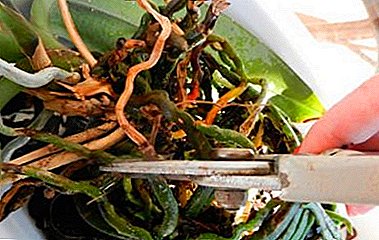 The first thing removed all damaged, rotten parts of the root system. With a sharp knife, the “live” mode does not regret that the rot will not spread throughout the whole plant.
The first thing removed all damaged, rotten parts of the root system. With a sharp knife, the “live” mode does not regret that the rot will not spread throughout the whole plant.- The cut sections are treated with pounded activated carbon or another antiseptic. Antibacterial agents should not contain alcohol-containing components.
- To process with fungicide solution finally to get rid of an infection.
- The remnants of the root system should be dipped in a solution with root stimulants. Such drugs increase the plant immunity, promote the earliest appearance of the roots.
- Determined with the method of germination: greenhouse or in the air. In the complete absence of the root system uniquely use the mini hothouse. If part of the roots is still there, you can do without it.
- We place the remains of the plant in a container with purified water.
- It is important that the flower be in an environment with a temperature of + 23-25ºС. Mandatory use of mineral components, based on potassium and phosphorus, 1 time per week.
- Once in 30 days, apply a root stimulator, the time the plants are kept in the solution is not more than 6 hours.
- New roots will immediately appear in the range from one to six months. It all depends on the initial state of the plant.
We recommend to watch a video about reanimation of an orchid without roots:
Prevention
In order to avoid unpleasant situations in the future, you should be attentive to the conditions of phalaenopsis. Necessary care is as follows:
- Recommended summer temperature: + 22-25ºС, in winter + 16-18ºС. Be sure to ensure that the difference in temperature drops does not exceed 5ºС.
- Do not allow direct sunlight to penetrate. Lighting required scattered.
- Humidity in the range of 50-60%. Be sure to air the room at any time of the year.
- Moisturize enough once a week, in between, the ground should dry completely.
- It is better to spray phalaenopsis with water about five times a day, but not during the flowering period.
Conclusion
Preventive measures and competent content parameters will help to protect delicate phalaenopsis from rot diseases. Also, do not forget to adjust the care depending on the time of year. Thus, the exotic will be healthy and beautiful.


 the flower does not grow;
the flower does not grow; The first thing removed all damaged, rotten parts of the root system. With a sharp knife, the “live” mode does not regret that the rot will not spread throughout the whole plant.
The first thing removed all damaged, rotten parts of the root system. With a sharp knife, the “live” mode does not regret that the rot will not spread throughout the whole plant.
